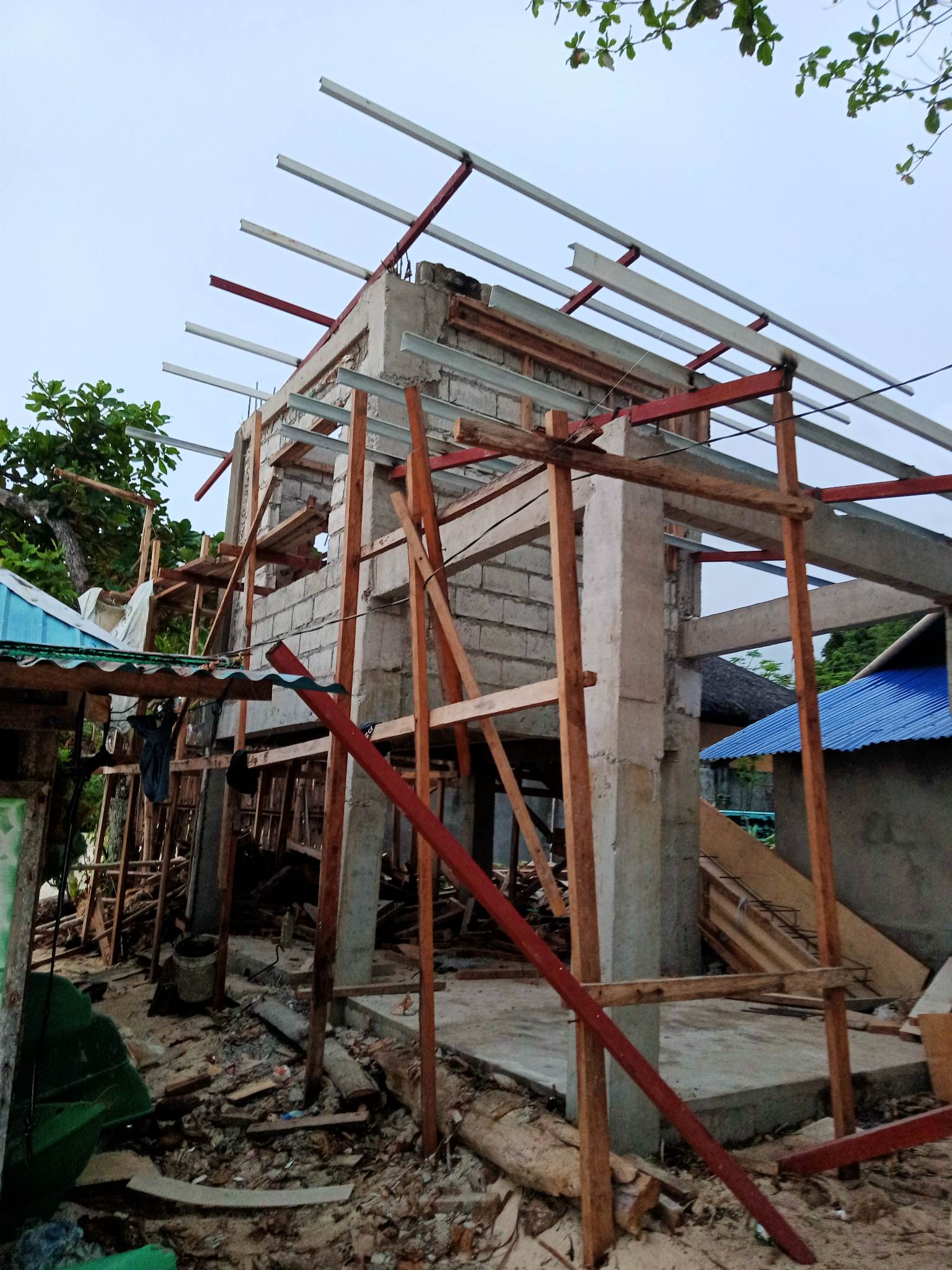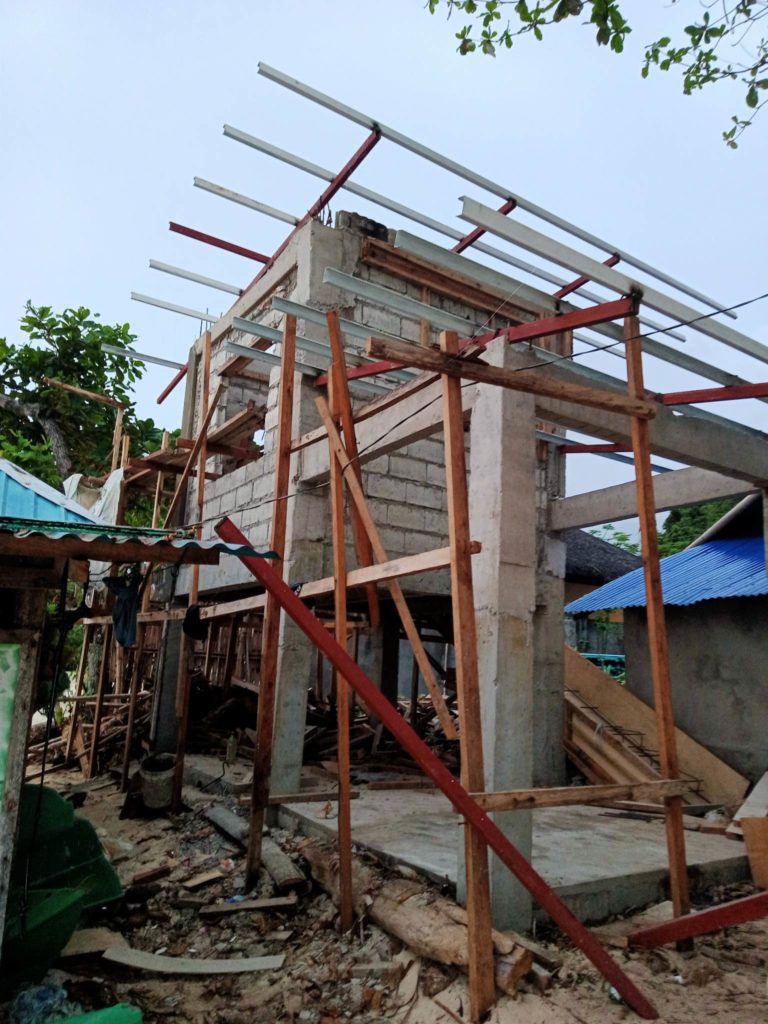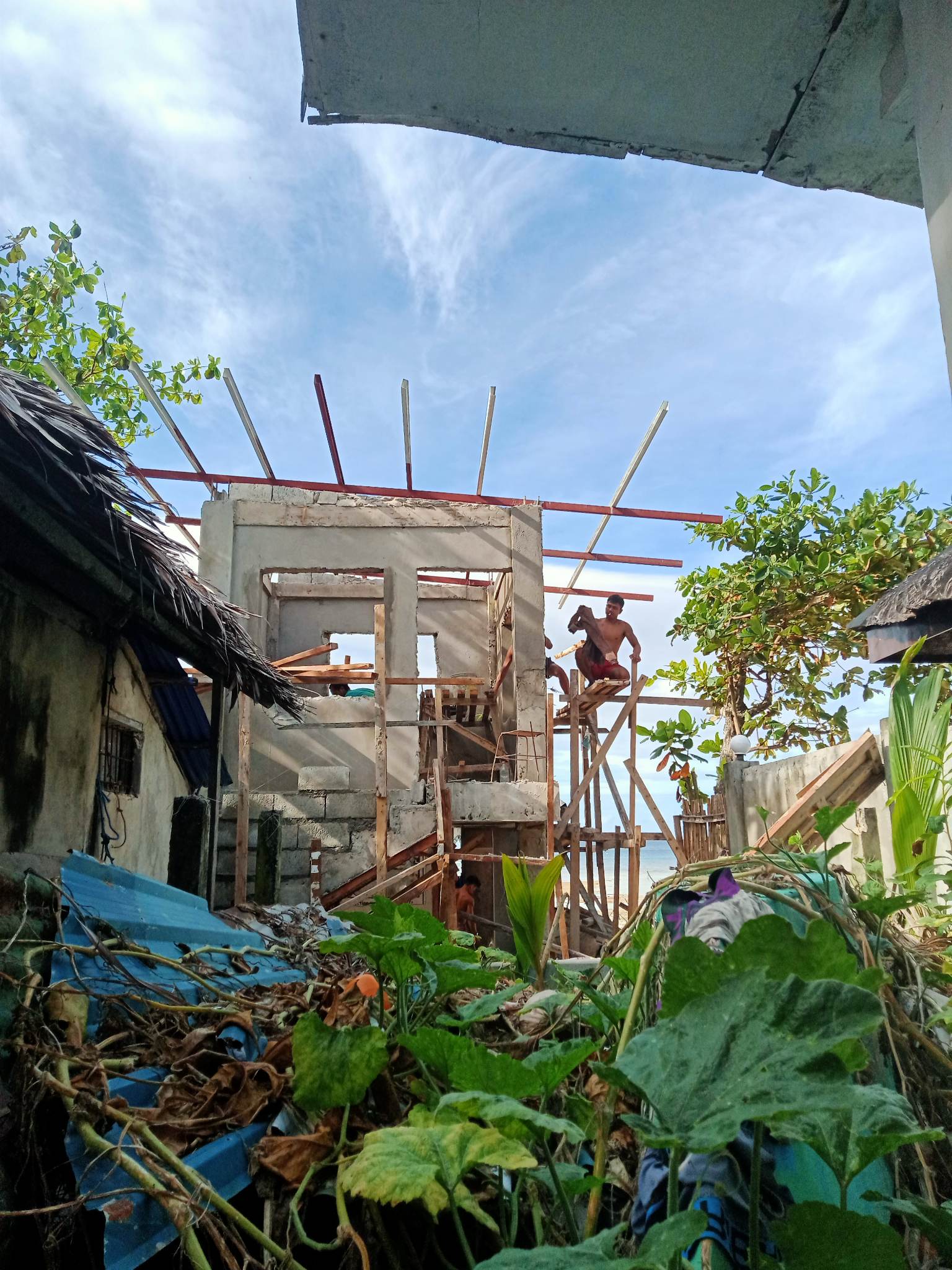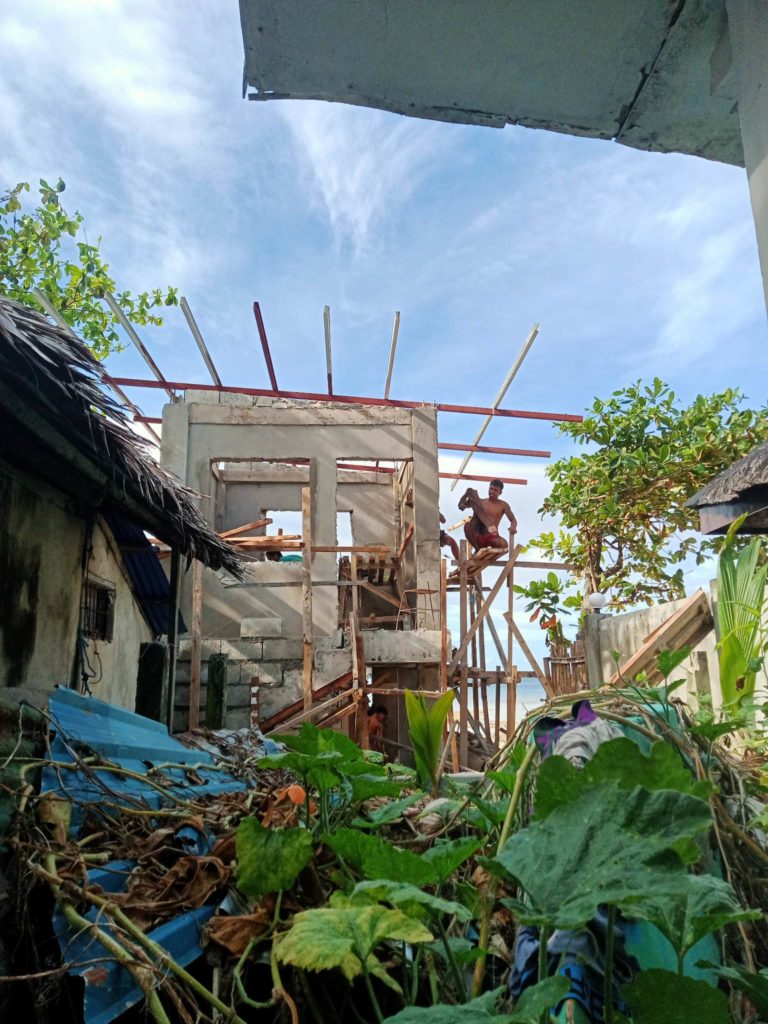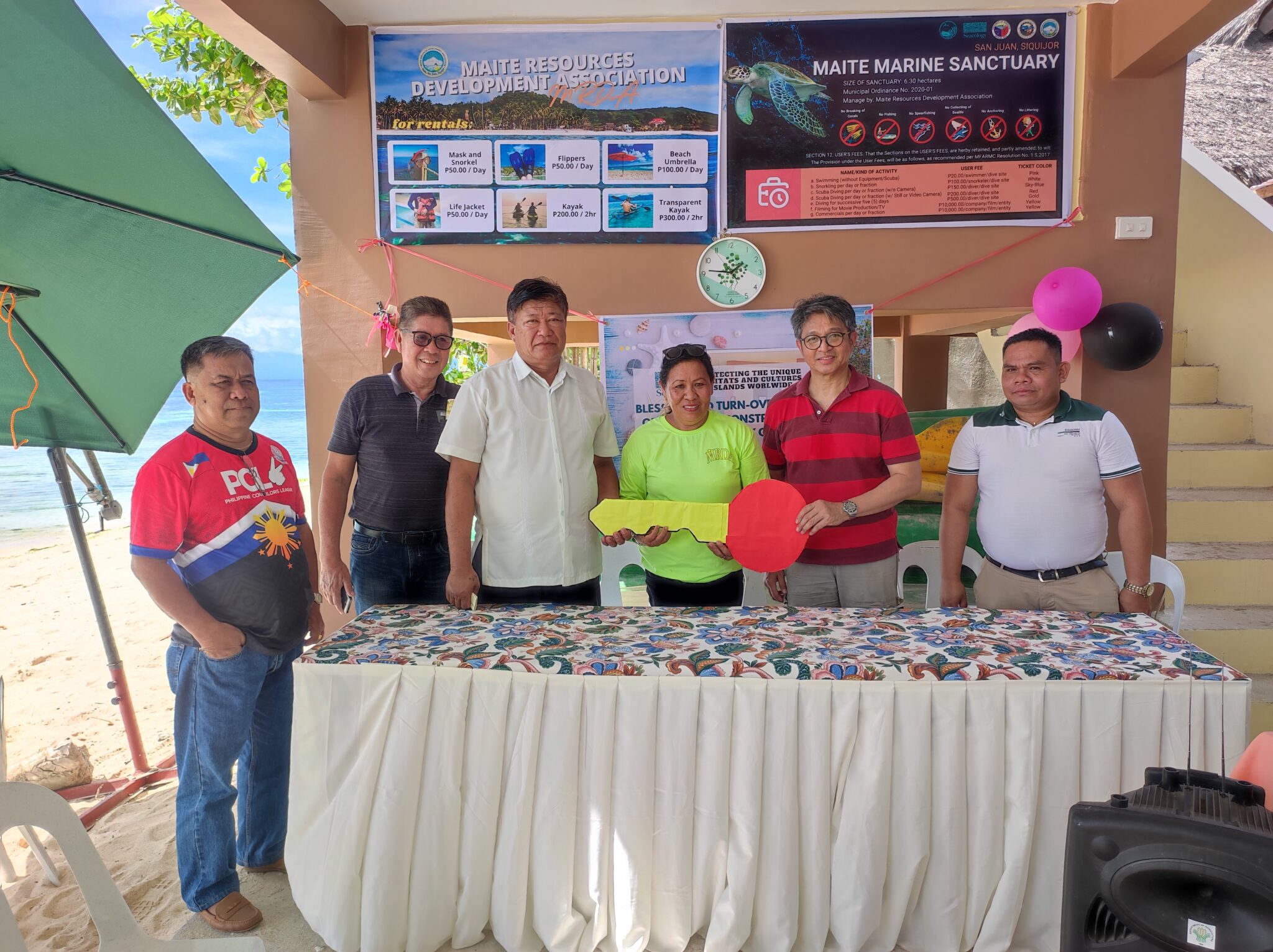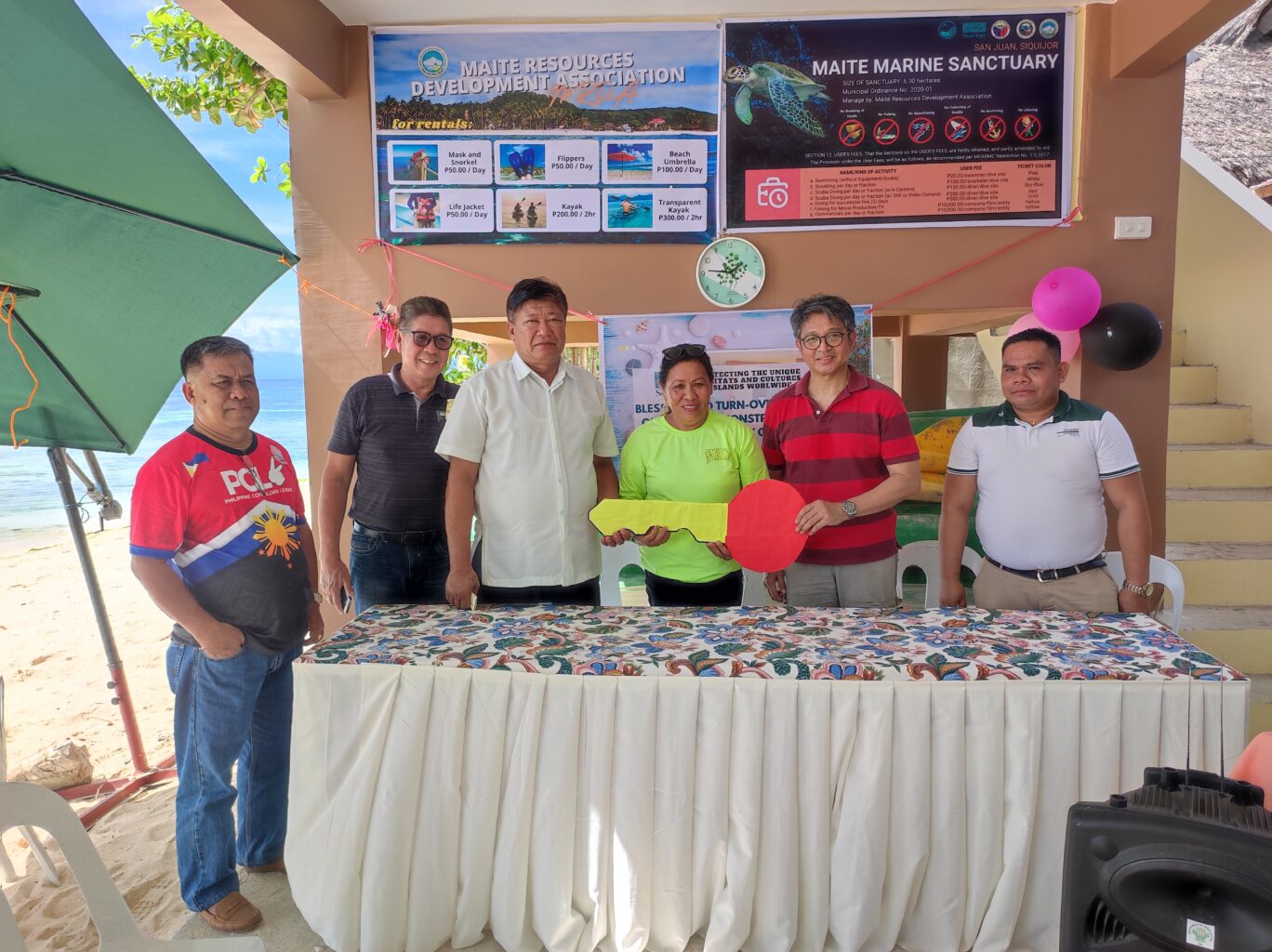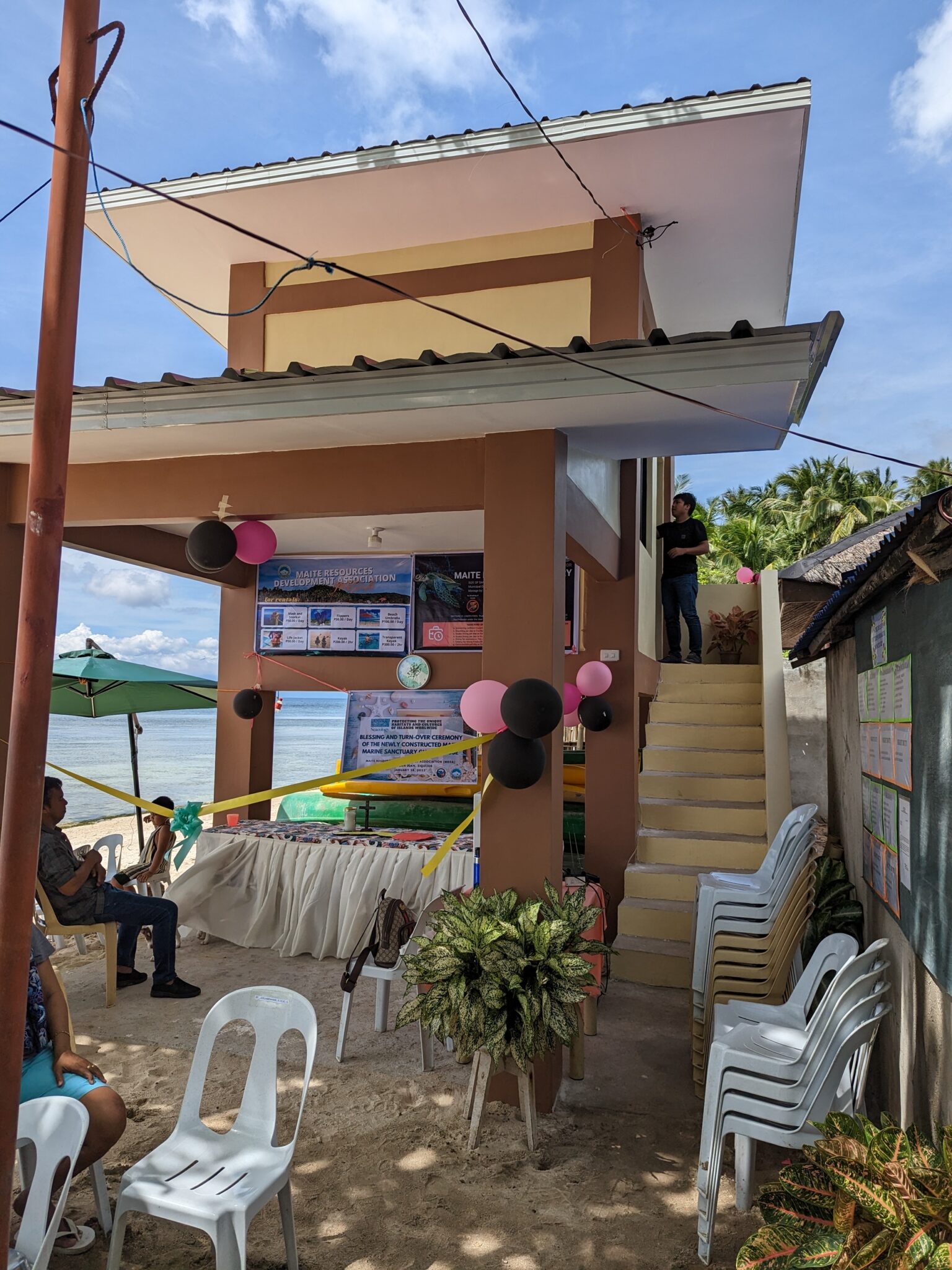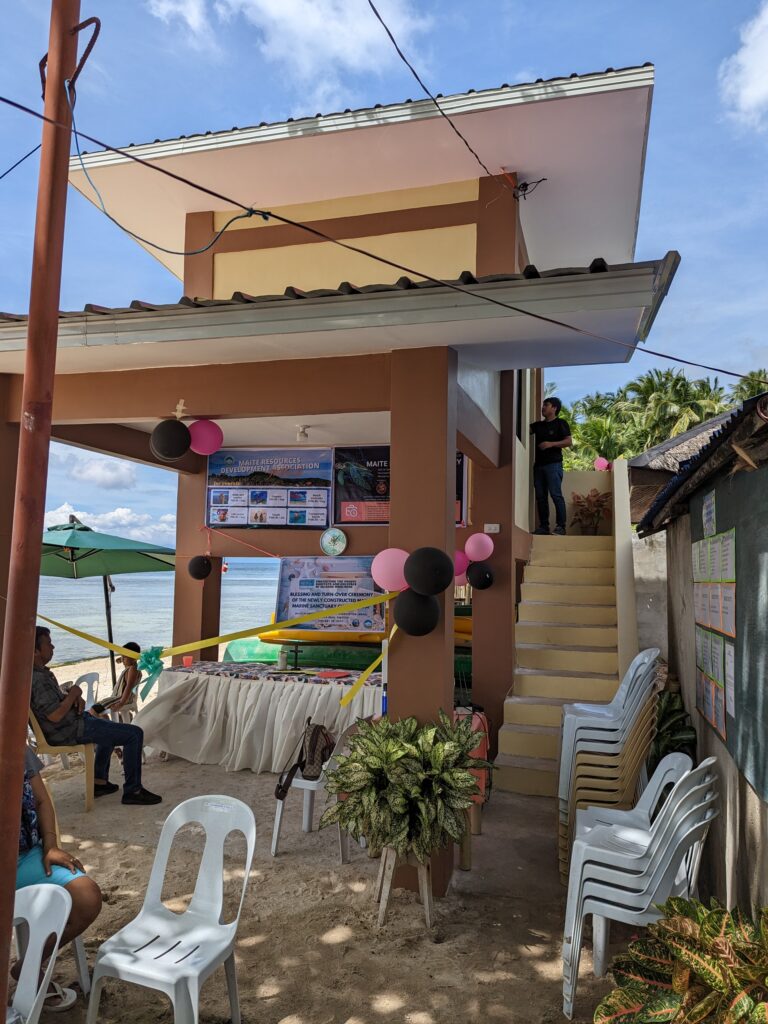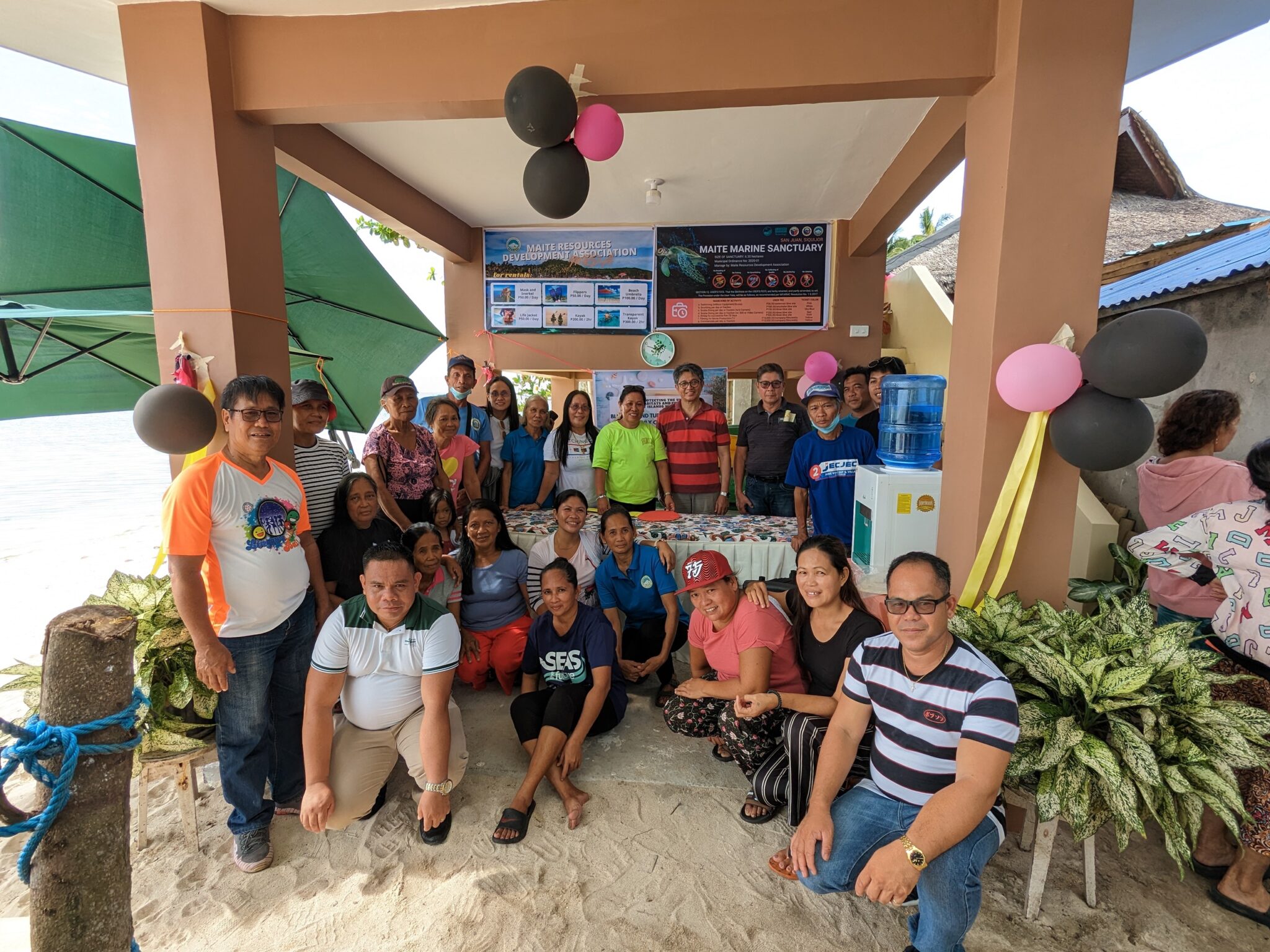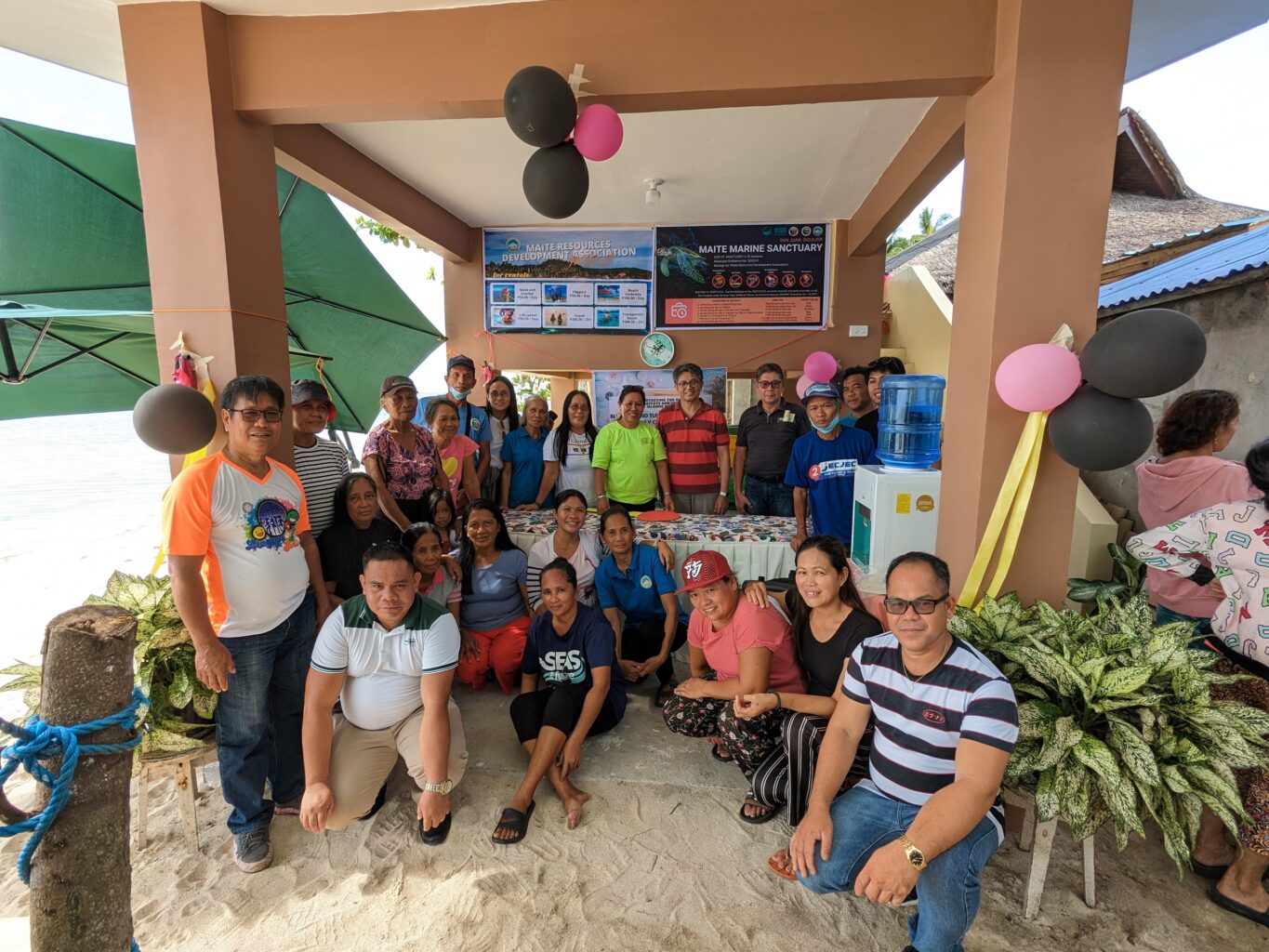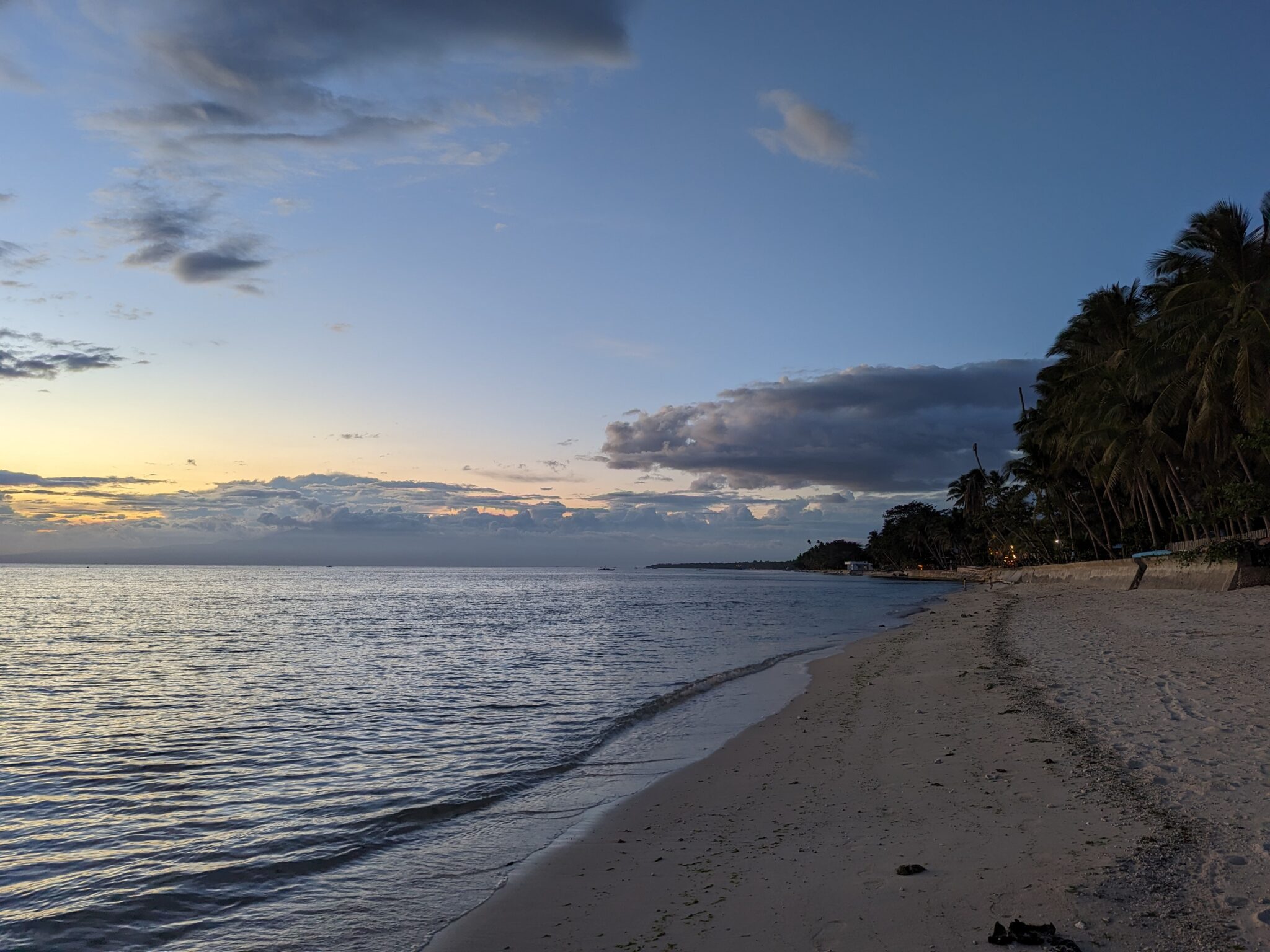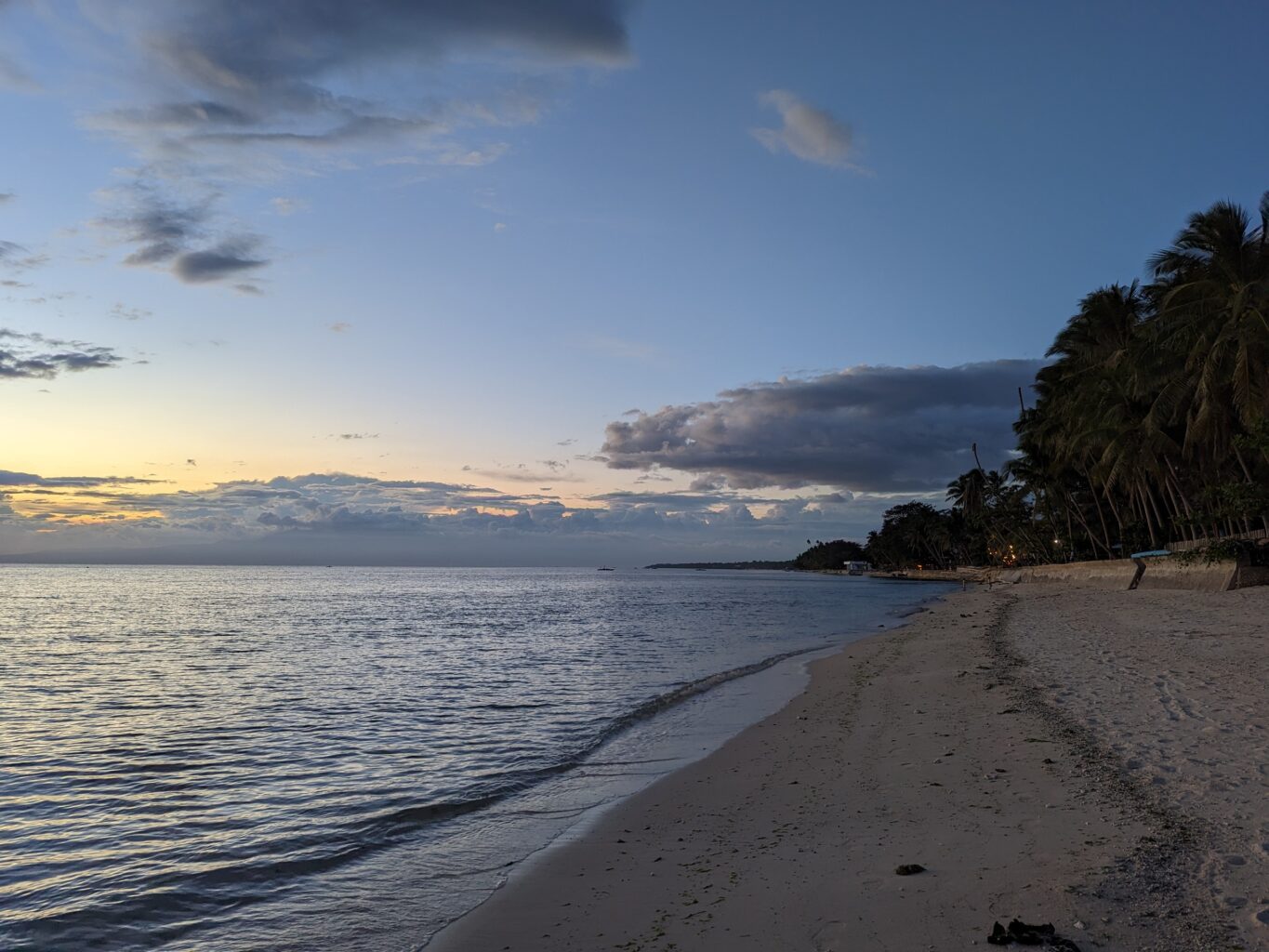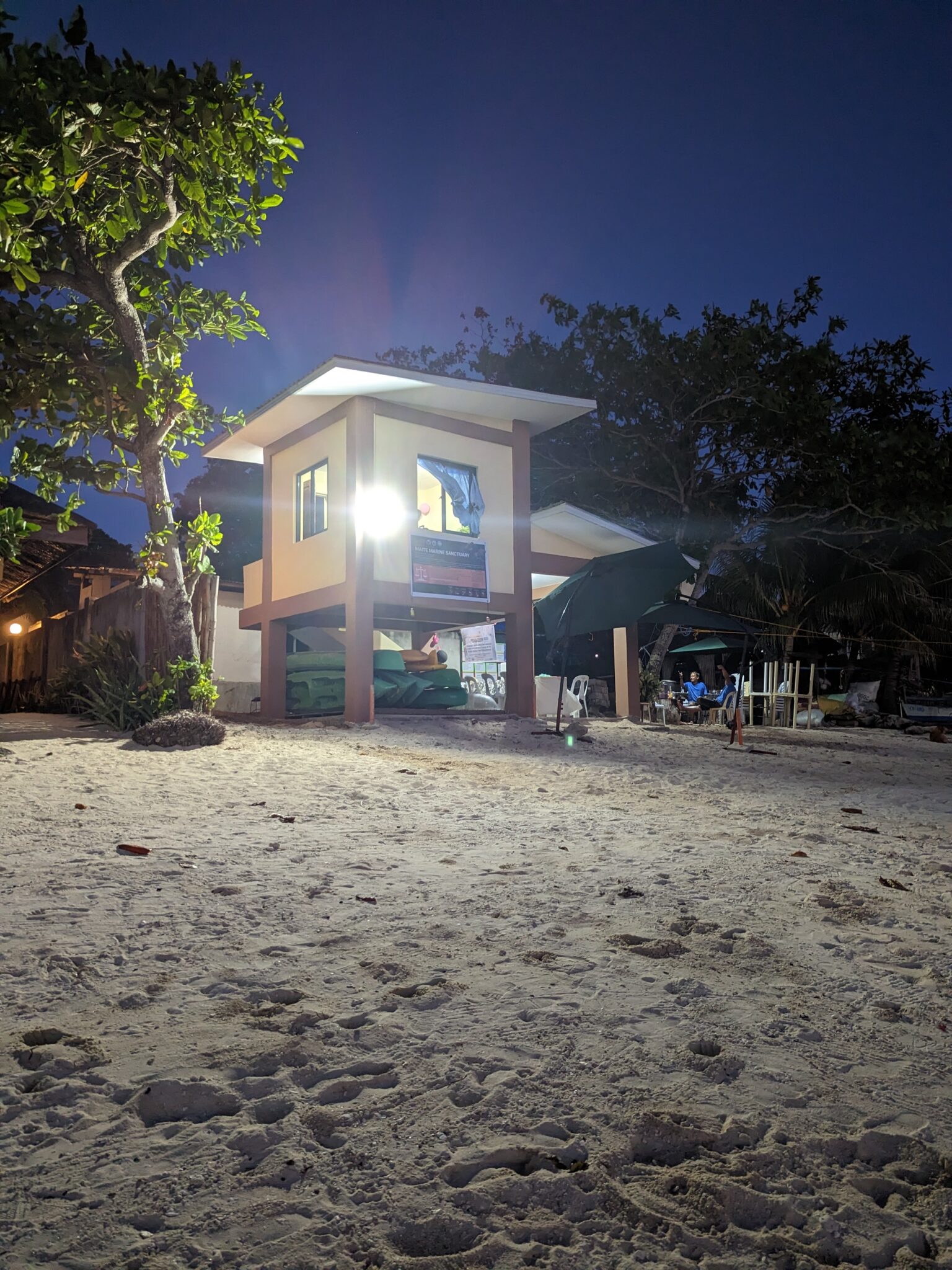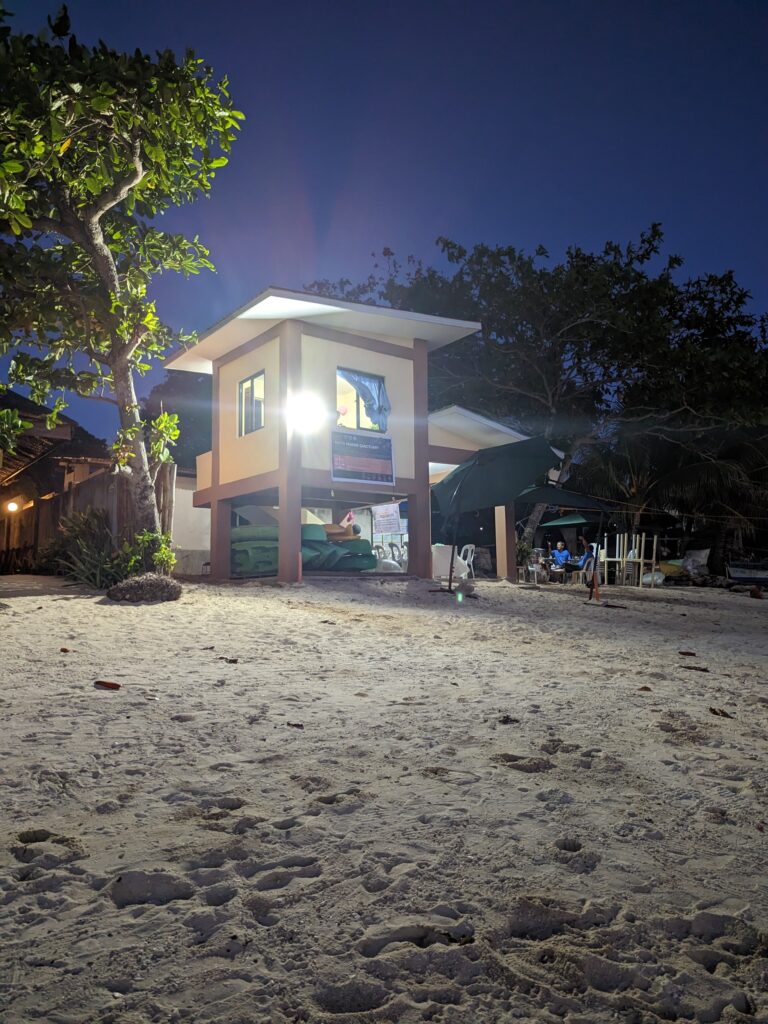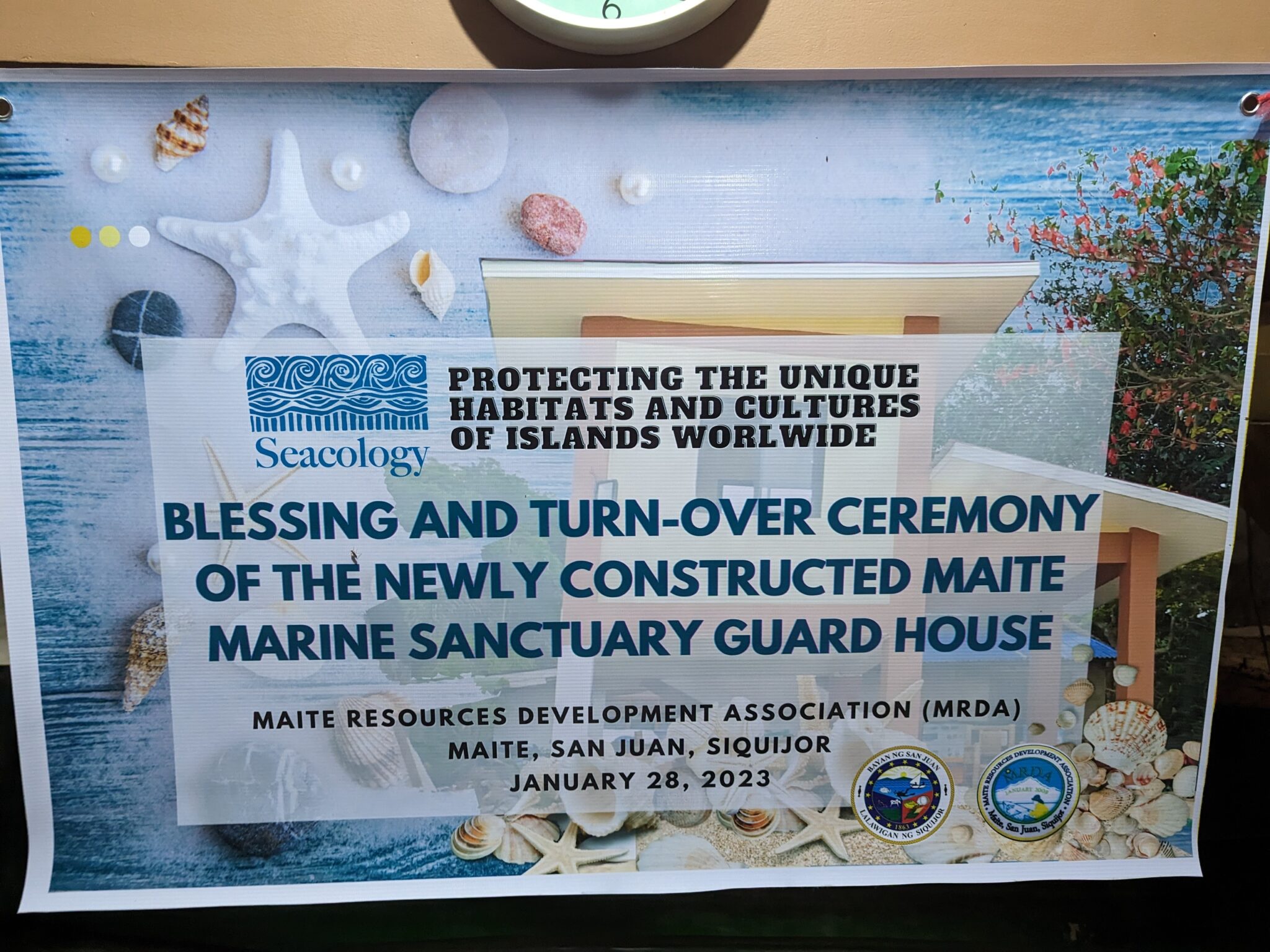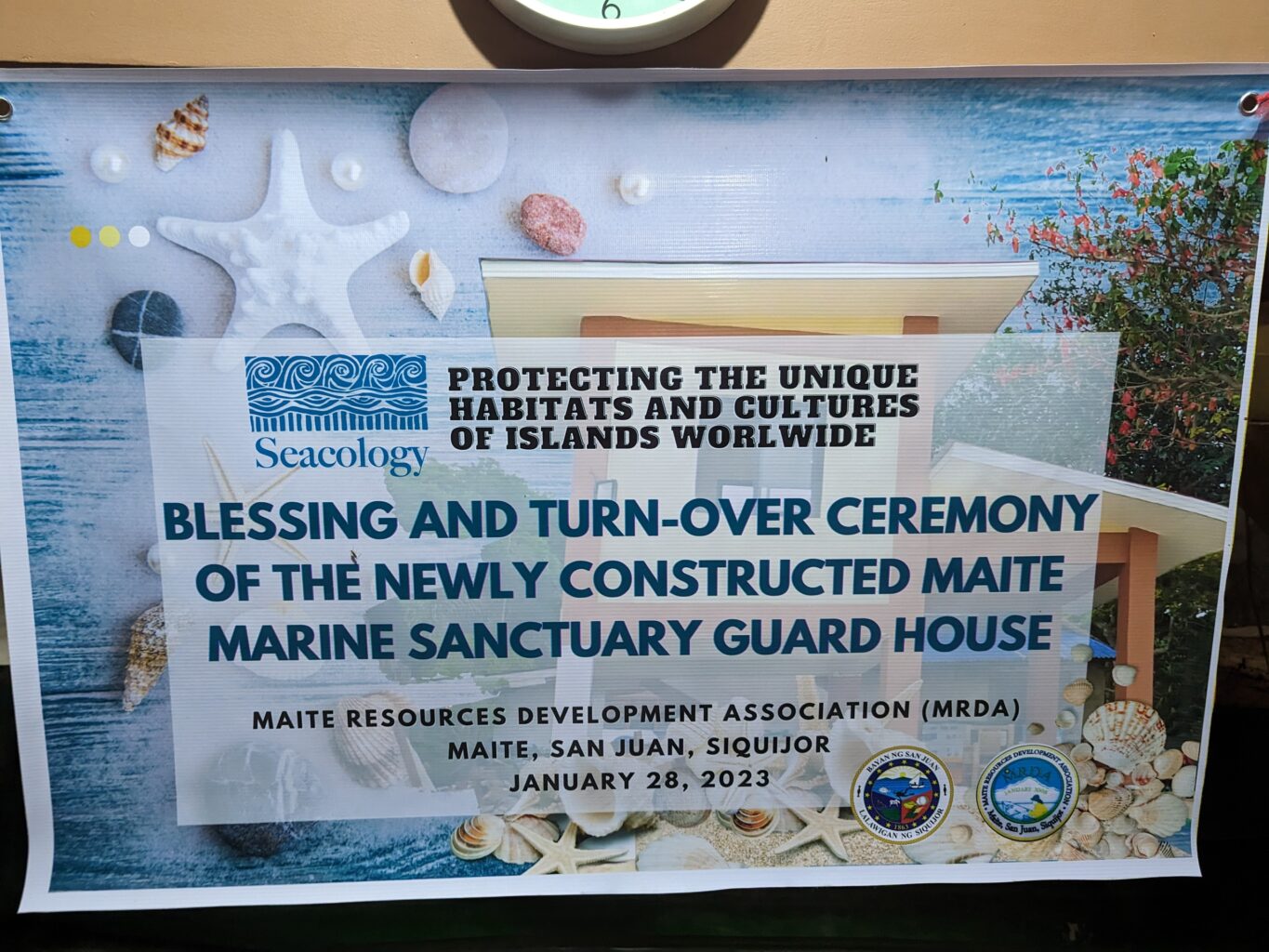Maite is a coastal barangay (village) of about 1,100 people. Most families make a living by fishing and running small businesses such as stores, restaurants, or lodgings for tourists on the side. In the early 2000s, their livelihoods were seriously threatened by outsiders, who came to the area and used destructive fishing methods such as dynamite and fine-net fishing.
People in Maite lobbied for their own protected area, and the 16-acre Maite Marine Sanctuary was set aside. It is home to the diverse marine life typical of Philippine coral reefs, including damsel fish, angel fish, octopuses, nudibranchs, and various species of crab. There are also seagrass meadows.
Two years later, the Maite Resources Development Association (MRDA) was formed to manage the sanctuary. Two-thirds of the group’s 50 members are women. Through the association’s efforts, the sanctuary has been expanded to 26 acres. MRDA members enforce the no-take rules of the marine sanctuary. Using kayaks, they silently paddle to the boats of illegal fishermen while the divers are underwater, and call the authorities to apprehend them.
The MRDA members run the organization on a shoestring, charging divers and snorkelers a small user fee. The women also make “seaweed chips” to sell to tourists. But pandemic travel restrictions stopped tourism almost entirely. When strict quarantines were in place, MRDA members managed to earn enough to cover their operating expenses by catering food at barangay and municipal meetings. Then in 2021, category-5 Typhoon Odette severely damaged the small bamboo-and-plywood guardhouse the MRDA had used as a base for its enforcement activities. There was no money for repairs.
The MRDA will use a Seacology grant to build a sturdier concrete guardhouse. The building will serve not only as a place to store kayaks and hold meetings, but also as a strong, visible symbol of the community’s commitment to protecting its resources.


